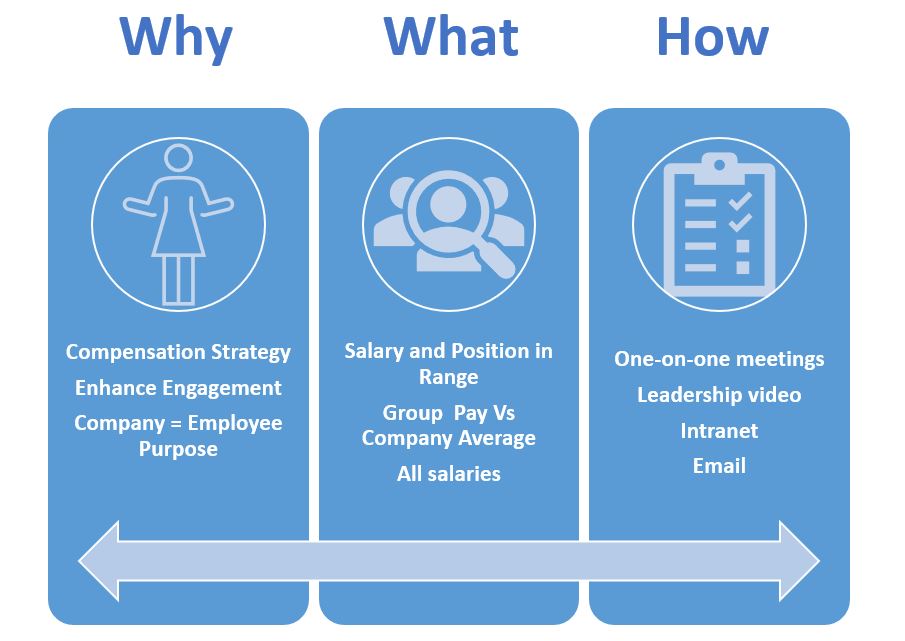How will your organization meet employee demands in a post-pandemic economy? Despite an expanding jobs market and growing optimism about the recovery, employers are finding that in many ways employees are in the driver’s seat as competition for workers tightens. This seeming paradox comes as unemployment levels remain high.

Agile companies are responding with compensation and benefits programs that address employees’ shifting priorities. Yes, making a fair and competitive wage or salary is important. But so is workplace flexibility and a focus on employee health, wealth, and well-being.
Here are four of the most relevant post-pandemic workforce challenges and opportunities to consider when revising your compensation plan in 2021:
1) Hiring & Retaining Key Employees
The biggest human resource challenge facing companies as the economy recovers is hiring and retaining employees. In the latest jobs report for March 2021, openings in the U.S. rose to 8.123 million, the highest on record. This is 5 million above pre-pandemic levels, based on data tracked by the Bureau of Labor Statistics.
While many of these job opportunities are in industries virtually shut down during the pandemic, other sectors including manufacturing are expanding. Unlike prior recessions, the laws of supply and demand are not the only trends impacting hiring and employee turnover. Concerns about workplace safety, issues with childcare, and other factors such as generous unemployment benefits may be keeping some workers on the sidelines.
Still, paying a competitive salary is key to bringing on new talent and rewarding key employees, especially your top performers and those in positions in high demand.
Finding real-time wage and salary information will help you determine how competitive your current compensation plan is and whether adjustments should be made.
2) Targeting Pay Equity
Organizations are targeting pay equity to ensure employees doing similar work under similar working conditions are paid fairly. Employees are demanding it; laws require it; and employers must address it to recruit and retain top talent.

The current federal administration will likely apply more stringent enforcement of equal pay regulations. Already employers who run afoul of the Equal Pay Act (EPA) can face penalties from the Equal Employment Opportunity Commission (EEOC). However, the reputation damage can be much worse, affecting the ability to attract and retain talent.
3) Enhancing Benefit Programs
As workers’ needs evolved during the pandemic, the value of benefits to all employees has become increasingly apparent.
Flexible work arrangements have been evolving and have been accelerated during the pandemic as employees had to care for children being schooled at home or for other family members. Accommodating flexible employment arrangements has become central to being an employer of choice. This means working outside of the historic 8 am to 5 pm workday and balancing employer and employee needs.
Some employees are subsidizing childcare, recognizing that difficulties finding reliable care during working hours may affect productivity. Others provide care on-site.
In any case, taking a fresh look at benefit strategies goes together with pay to support a competitive total compensation package.
4) Compensating Remote Work
During the pandemic, most organizations implemented employee work-from-home programs. Many employees would prefer to continue working remotely, at least part of the time. In exchange for reduced commuting time and more flexibility, many found these new arrangements to be more productive and family friendly.
Employers also found remote work arrangements helped them save on real estate and other overhead, such as travel and meeting expenses. Making these types of arrangements permanent or long-term will require changes to management style to integrate remote and in-office workers.
In addition, companies who can hire from any location must decide how they will pay their remote workforce. On the one hand this is a desirable workplace perk, while on the other salaries vary drastically depending on competitive practice cost of living and other factors from region to region.
We believe that most companies will approach the issue by referencing cost of labor and not cost of living data. Whether they use specific location or broad geographic information to determine a compensation structure has yet to be determined. But companies will most likely base remote compensation on competitive practice to avoid paying under market and allowing employees to be poached away because of pay.
Summary
Shifting attitudes about work and the workplace developed during the pandemic will carry over longer term and will impact compensation, hiring and retention in 2021 and beyond. What you pay employees and how you reward them with benefits and services will either help or hinder employee management plans in an increasingly competitive job market. Be sure to make the right choices based on what’s competitive for your industry and market.
Contact Us
For help or information on this topic, you can email me nlappley@lappley.com or call (847) 921-2812.
























